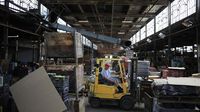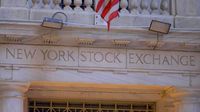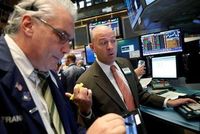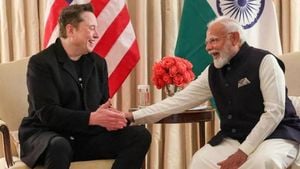U.S. wholesale prices fell last month, indicating a cooling of inflationary pressures before they reach consumers. The latest Producer Price Index (PPI) report, released on April 11, 2025, showed that wholesale prices dropped by 0.4% in March from the previous month. This decline is significant, as it contrasts sharply with economists' expectations of a 0.2% increase. On an annual basis, the PPI slowed to a 2.7% increase compared to March 2024, down from 3.2% in February 2025. These figures suggest a moderation in price pressures, which could have implications for Federal Reserve policy decisions.
The report also revealed that the core PPI, which excludes the more volatile food and energy prices, rose at a 3.3% annual rate. This figure was below the anticipated 3.6% increase, adding to the narrative of easing inflation. Economists had predicted a monthly rise of 0.2%, making the actual results a pleasant surprise for market watchers.
Despite the positive news regarding inflation, the response from the stock market was muted. S&P 500 futures were up by 0.7%, Dow futures rose by 0.6%, and Nasdaq 100 futures increased by 0.9%. However, as noted by Paul Hickey, co-founder of Bespoke Investment Group, "Given the brushing off yesterday’s CPI, it doesn’t look like the market will pay much attention to that report." This sentiment reflects a broader trend in which the market has been slow to react to favorable economic indicators.
The backdrop of these developments includes a recent Consumer Price Index (CPI) report, which indicated that consumer inflation also showed signs of cooling. The CPI rose just 2.4% in March compared to a year earlier, marking the smallest year-over-year increase since September 2024. Core consumer prices recorded their smallest annual increase in nearly four years, reinforcing the notion that inflationary pressures may be subsiding.
However, the economic outlook remains complicated by ongoing trade policies. President Donald Trump has implemented substantial tariffs that could potentially undermine the progress made in reducing inflation. Specifically, a 145% tariff on Chinese imports and a 10% tariff on most other imports have been introduced, raising concerns among economists about the potential for increased costs being passed on to consumers and businesses.
These tariffs have already begun to affect market dynamics. For instance, wholesale iron and steel prices surged by 7.1% in March, marking the largest monthly increase since April 2021. This spike highlights how tariffs can create upward pressure on prices, counteracting the otherwise positive trends seen in the latest inflation data.
As the market digests these mixed signals, the Federal Reserve faces a challenging environment. The central bank may have more room to consider interest rate cuts at its upcoming May 6-7 meeting, especially if the trend of cooling inflation continues. However, the impact of tariffs on inflation remains an unknown variable that could alter the economic landscape dramatically.
The Labor Department's PPI report serves as a crucial indicator of future retail-level inflation. As the economy grapples with the effects of Trump's trade policies, it remains to be seen how these pressures will manifest in consumer prices. The combination of falling wholesale prices and potential tariff-induced increases presents a complex scenario for economists and policymakers alike.
In the cryptocurrency market, Bitcoin began the day trading at approximately $81,838. Following the release of the PPI data, Bitcoin experienced a brief rally, gaining around 0.6% in value. However, the broader economic uncertainty stemming from the trade war continues to exert negative pressure on the crypto market.
Overall, the recent PPI data paints a picture of a cooling inflation environment, but the looming threat of tariffs complicates the outlook. As the Federal Reserve prepares for its next meeting, the interplay between these factors will be critical in shaping monetary policy moving forward. Economists and investors alike will be watching closely to see if the current trends can sustain themselves in the face of new trade barriers.










